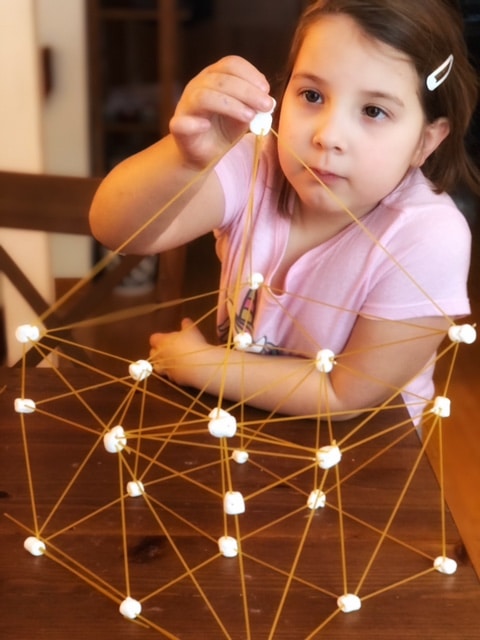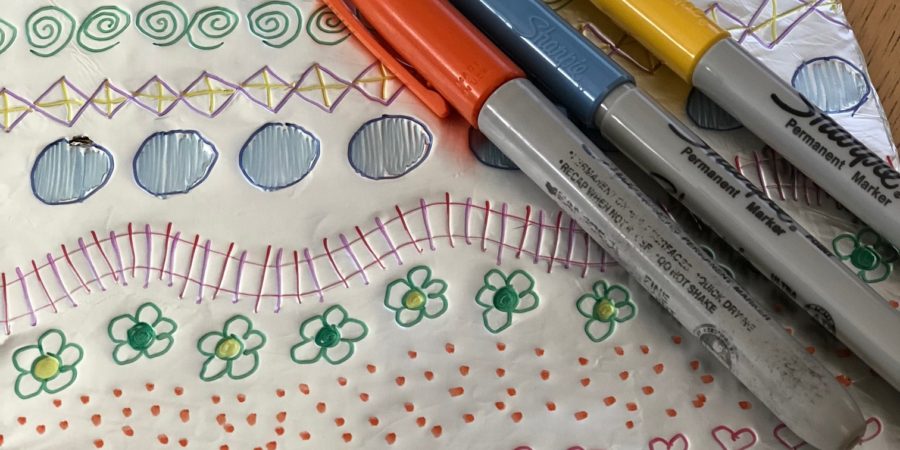Okay, I have to admit something. This is my, well one of my parenting fails. Of course, there are many more, but where do we as parents learn how to do things? You learn from your own parents, from their mistakes and great ideas. There is no parenting school. You talk to friends with kids, but who tells you what is right or wrong? So, here is my fail: My kids have handwriting problems. Can I do fun Fine Motor Activities to help them?
Crafty Dutch Girl is Reader-Supported. When you buy through links on our site, we may earn an affiliate commission. Learn more.
This will be an ongoing post for a few weeks (starting February 5th, 2021), where I’ll be adding more and more activities for kids of all ages.
Children’s developmental stages
Before I moved to the USA, even before I was married and had our first child J, I worked as an occupational therapist in Germany for about 9 years. I treated children with concentration problems, sensory-integration problems and fine motor problems.
At that point I was not even thinking of my own kids in the future and how they would be analyzed and treated…by me….in case something was wrong not developed correctly. I realized later that it was actually beneficial to have some knowledge about the different children’s developmental stages. Here you can find a blog post I wrote about why I think doing crafts with kids is so important.

When J was 1,5 years old and started to walk, I noticed the tippy-toe walk. First I thought, it was a phase. I tested on sensory integration problems, but there were none. Then, we went to the pediatrician for a checkup. We got a referral to an orthopedic doctor, who let J walk from one side of the room to the other and said: ” Six weeks in a cast. Come back every month to push the feet in a more straight position.”
I never went back with approval of our pediatrician. We massaged the calves with oil while reading books at night. All is good now!
Figuring out what is normal at a developmental state and what not is sometimes hard to figure out. Connecting with pediatricians and teachers is important if you’re not sure what’s going on!
My kids say I’m JUST a mom.
Sometimes you have a gut feeling and you just go with it. Mothers instinct, I guess! I played all kinds of games, made crafts and read books to them, hoping they’ll get the basic developments right. But then, kids start to talk, talk back, I mean!
“You’re just a mom, mom!”
“You don’t know about how to write. We learn that in school. You’re not a teacher!”
I told them how we learned how to write in my school in the Netherlands. We had to sit straight, feet on the ground, a fist-space between the desk and the chest. We wrote with so called fountain pens. This made you write in cursive the right way. We started cursive in first grade, did all kinds of pre-writing activities in pre-school and Kindergarten.
“And btw, I was an occupational therapist before you were born and I helped a lot of kids with writing and other fine motor problems!!!”
Nowadays teachers discuss if there is still a need for writing in cursive, going to print or just typing. At the current school where our kids are now, the curriculum for writing changes regularly. J and K started print from grade 1 till 3rd grade, then cursive after that. Both of them stuck with print and didn’t get cursive writing right from the beginning. Also their pen grip was not taught right from the beginning. Now they’re complaining about cramps and pain in their hands and not having the ability to write for along time. Well, there is the problem and I felt it was my own fault!
Occupational Therapy
The occupational therapist focuses in three different developmental areas.
- Self care life skills (getting dressed, eating and hygiene)
- Academic skills (using scissors, pen skills and other handwriting problems)
- Play (manipulating objects like beads, Lego, dressing a doll, use of a keyboard and mouse)
Fine Motor skills are a big part in these areas to be successful.
Being an occupational therapist, I used to give parents and teachers advice what they could do with their children, based on my knowledge at that time. But not knowing how it actually is to have kids around 24/7. Especially kids who need more attention, because they are having a hard time in their daily lives, physically and/or mentally.
So, I had little knowledge about the developmental stages of a child, but not the knowledge of being a parent. Even now, being a parent and have a little knowledge of the stages of a child, I trusted the teachers to take some things over from parents. Especially now with the pandemic, parents find out it’s not easy to teach kids in a way teachers do.
Fine Motor Activities and Handwriting Skills
First of all, I had to tell myself, I’m not perfect. We want to be THE perfect parent, but we’re just trying the best we can. Parents need to work a lot to make ends meet and make time for their children as best as they can.
Secondly, every developmental stage in a person’s life is different and therefor different kinds of attention is needed. I know our 7-year old likes to have attention all the time, and I know I can put any kind of activity in front of her and she’ll do it! Our 13-year old son, is interested in …well…nothing! So that’s going to be a challenge to figure things out for him to do. Our 14-year old is already drawing a lot and doing fine motor activities. I’m going to focus on our 7 and 13-year old first.
And thirdly, this will hopefully help with reducing screen time a bit and getting them interested in other activities besides online games. Getting the creativity flowing and spent time together.
I talked to them already. We’re going to do some fun projects after school, with an after school snack and drink.
Keep checking this post for more ideas. If you have any great projects to do with kids for fine motor strength, bilateral activities, crossing the mid-line, manipulation of objects etc. please let me know in the comments below.
1. Build with marshmallows and tooth picks/spaghetti

This was my first choice, because it is interesting enough for a first activity. A little bit of competition too. I told them to build the highest, most sturdy structure with tooth picks or uncooked spaghetti and marshmallows.
If you don’t have tooth picks, like us, we used uncooked spaghetti and small marshmallows. This project also needs some engineering skills. I let them try things out. For example, if using long sticks of spaghetti is stable enough to make a high structure, or are smaller pieces needed?
This is a bilateral activity, meaning, both hands need to work together properly. One hand is the steady/holding hand, the other hand, usually the dominant hand is the hand which “does the work”.
Using spaghetti means that the kids need to be careful not to break the spaghetti in many pieces. And not squashing the marshmallows to much while pushing the spaghetti in them.
Manipulating the small objects is a good fine motor skill to have and because of the different textures it’s good for sensory integration (marshmallows can be sticky too).
2. Picking things up with tweezers
Another idea for fixing handwriting problems is this activity for finger strengthening. Both my youngest and my oldest are organizers. I’ve noticed by choosing activities, you have to tap into what they like…. or not like for that matter!
A good tool to use is knowing what their energy level is. You can do a quiz for yourself or your child here. I have 3 children, but they’re all different.
Here is an activity which will help concentration, controlling fine motor strength, crossing the middle line and hand-eye coordination.
For my youngest (7-years old) I chose Perler Fuse Beads, a muffin tin and of course tweezers. If you have a younger child, you can use colorful pompoms and tongs. For my 13-year old I had a mini puzzle which came with tweezers. He is not always a focused child, so I let him have regular breaks.

You can scatter the beads, pompoms or puzzle pieces on the table, so your child needs to reach in each direction to get the object with the tweezers or tongs (crossing the middle line). Make the puzzle or organize the beads or pompoms by color. They can play after or make a fun pattern with the beads.

3. Handwriting a letter on my Kids Stationary
To give kids a piece of paper so they can write AAaa, BBbb, CCcc etc. is not much fun. For smaller kids you can try these pre-writing exercises I used around Easter time (#5 on this blog post).
For our 7-year old, who just started to write and had a project at school about writing a letter to someone. They learned about the date and place, a greeting, how to put an address on an envelope and mailing it with stamp and everything! I thought this is a great way to send a beautiful letter to loved ones, like a cousin, grandparents or friends. A letter through “snail-mail”.
Here you can find a Stationary bundle for kids, includes 3 letter sheets with a coloring page and hand writing lines.

4. Handwrite with Q-tips
Print out this template and let the kids make small dots with Q-tips and paint in between the lines to write the letters. This is a different way of “writing”. Watch for a good sitting position, how much paint they use and how they hold the Q-tip.
5. Build a house or car

I remember these “bouwplaten”. I’m not sure how they are called here in Amerika, but we used to build things with these pre-made templates. You can print them out on cardstock, sometimes color them first and then cut them out. The hard part with this activity is cutting (some of the glue parts are very small), folding and having the patience to hold the parts together after they’re glued.

Our 7-year old and I made a house and My 13-year old needed some help with this “Volkswagen Beetle”.
6. Walk the tennis ball!
Using your fingertips only, you can walk the tennis ball over from one side of your leg to the other side. This is good for dexterity control and also for crossing the middle line. You can change it up with bigger balls or even a small ping pong or golf ball.
See you next time for more activities!

Hello everyone,
Welcome to my Crafty Dutch Girl blog! Grab a cup of “koffie” and browse through fun blog posts about our Dutch family expat life in the USA, Dutch history, Dutch recipes, Dutch things to do in the USA and all kinds of crafts and activities. Don’t forget to connect with me for new ideas! “Groetjes en tot ziens”.

